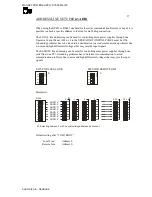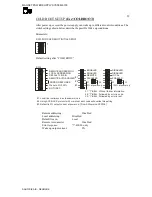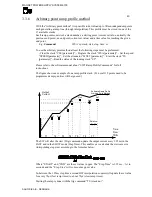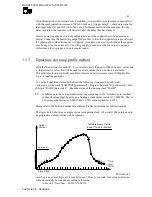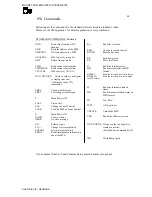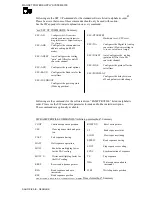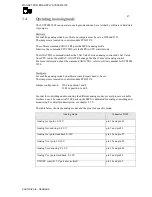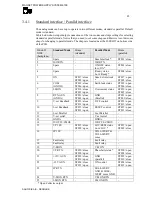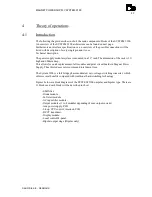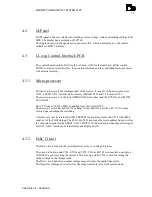
MAGNET POWER SUPPLY SYSTEM 9100
40
DANFYSIK A/S - DENMARK.
3.3.6
Arbitrary point ramp profile method
With the ”Arbitrary point method” it is possible to download up to fifteen independent points
each generating a ramp line (through interpolation). This profile must be stored in one of the
15 available stacks.
Each ramp point consists of a stack number, a starting point (current set value, normally the
previous end point), an end point (current set value) and a time value for reaching the given
end point.
E.g.
Command:
WSA' sp' stack, start, stop, time 'cr'
To use the arbitrary point method at least the following steps must be preformed:
- Clear the stack “CSS [parameter]”,- Program the stack “WSA [parameter]”,- Set the speed
“SPEED [parameter]”, -Set the attenuator “MULT [parameter]”, -Start the stack “TS
[parameter]”, -Read the status of the running stack “S2".
Please refer to the software manual about “SW2 Ramp Profile Commands” for full
instructions.
The figure shows an example of one ramp profile stack. (Ps. not all 15 points need to be
programmed empty, entries will be ignored.)
The SW will after the start (Trig) command update the output current every 1.25ms in the
FAST and in the SLOW mode (Step Time). This enables us to calculate the stair case size
(interpolating step size) according to the formulae below:
Where “START” and “END” are the set values in ppm. The “Step Time” is 1.25ms. , Δt in
seconds and the “Step. Size” will come out as ppm value.
In-between the 1.25ms step time a second HW interpolation counter will update the set value
for every 78μs (fast ramp times) to about 78μs (slow ramp times).
Starting the ramp is done with the trig command “TS (stack no.)”.
T1
T2
T3
T4
T5
T6
T7
Output
Current
Time
From
TRIG
Software Ramp Profile
No1
No2
No3
No4
No5
No6
No7
Relative
Arbitrary Point Method


